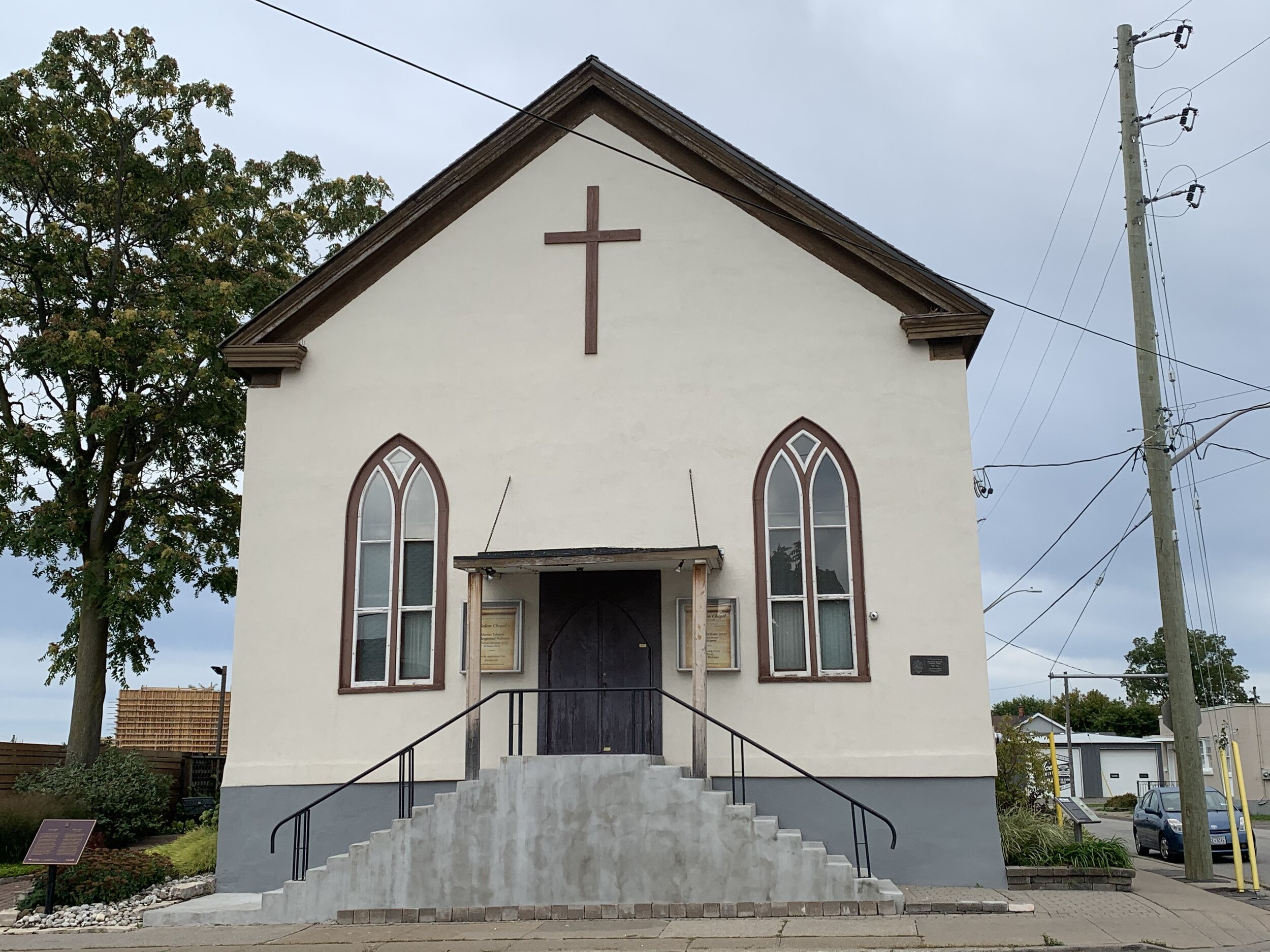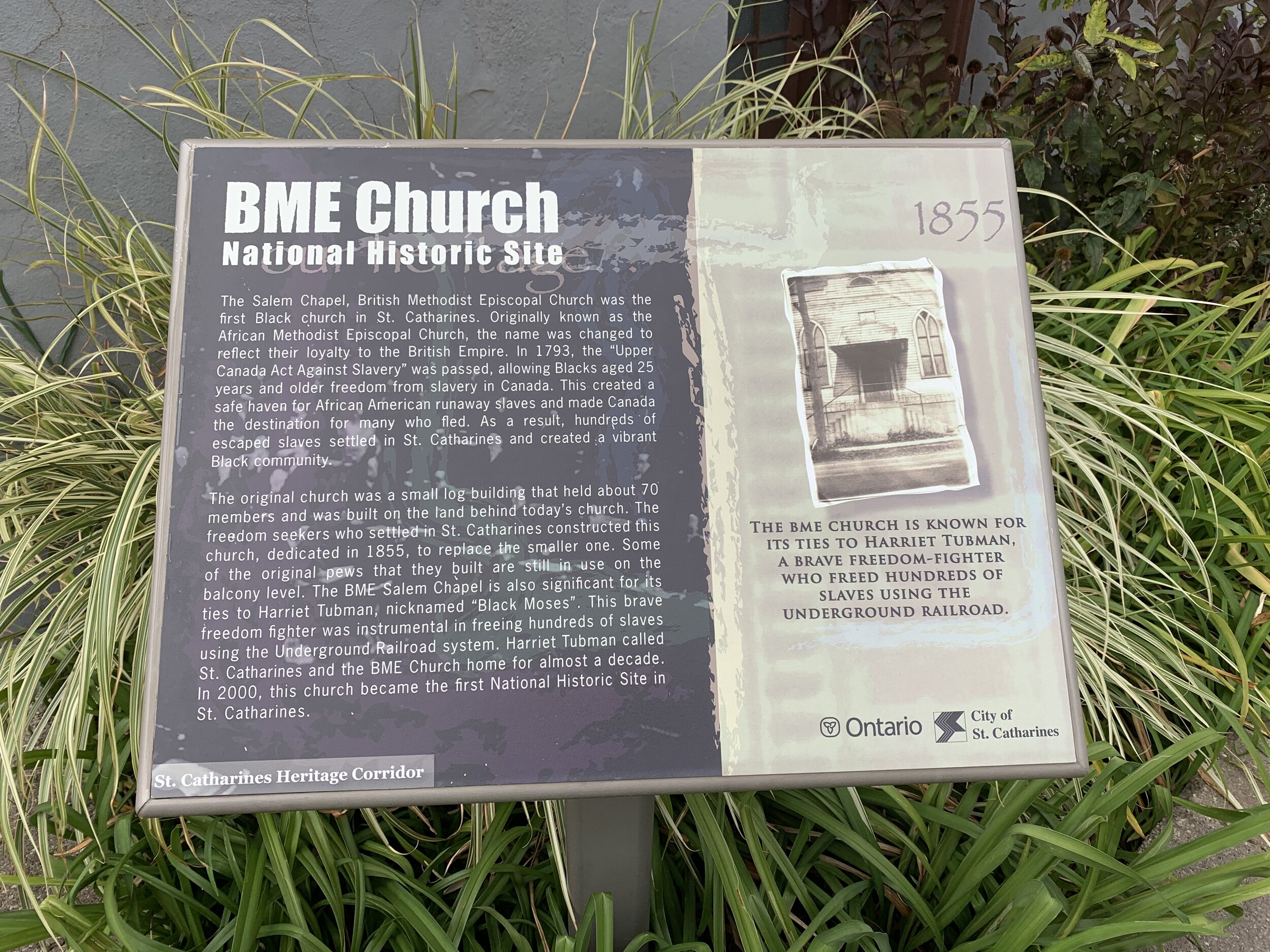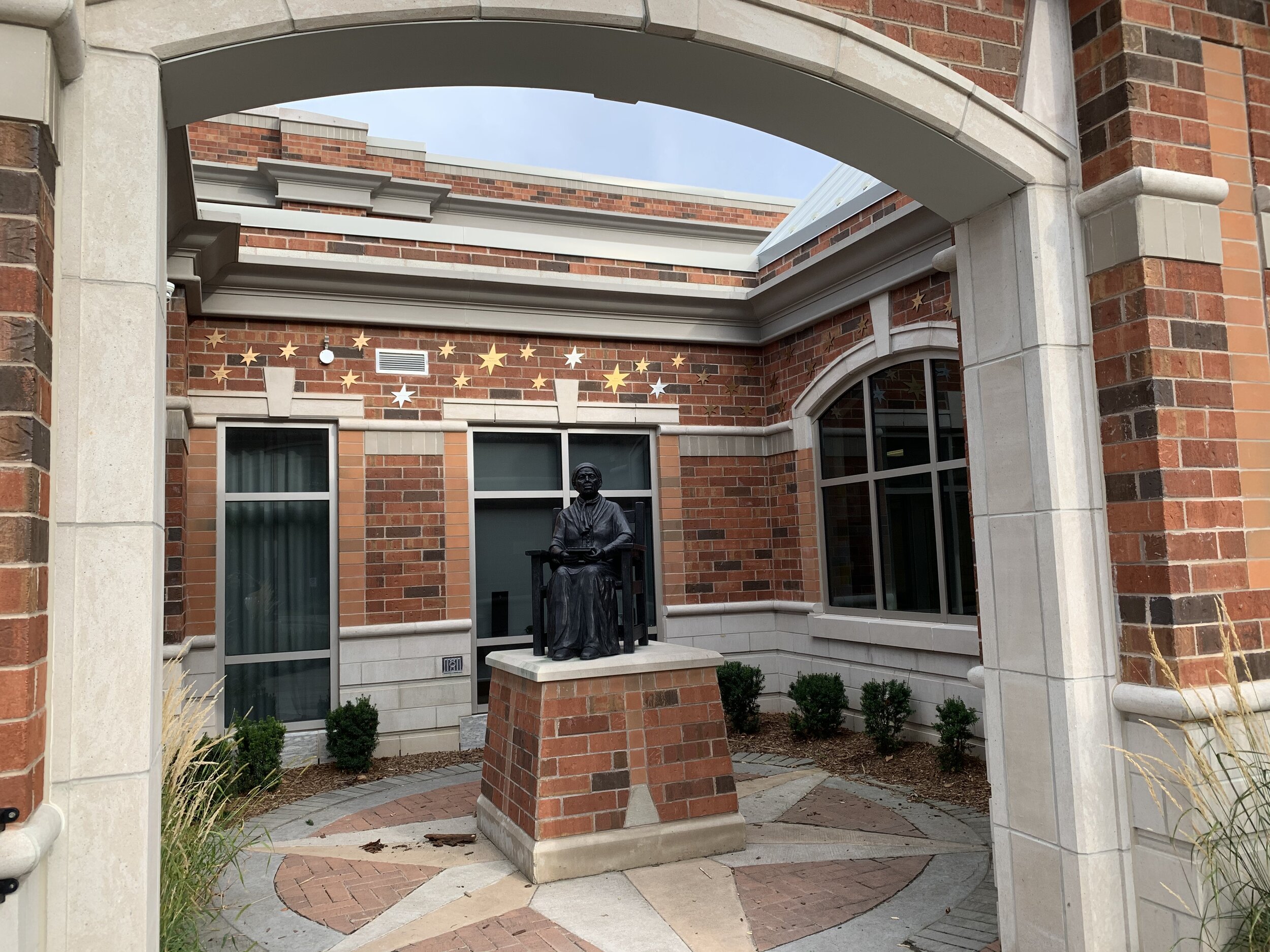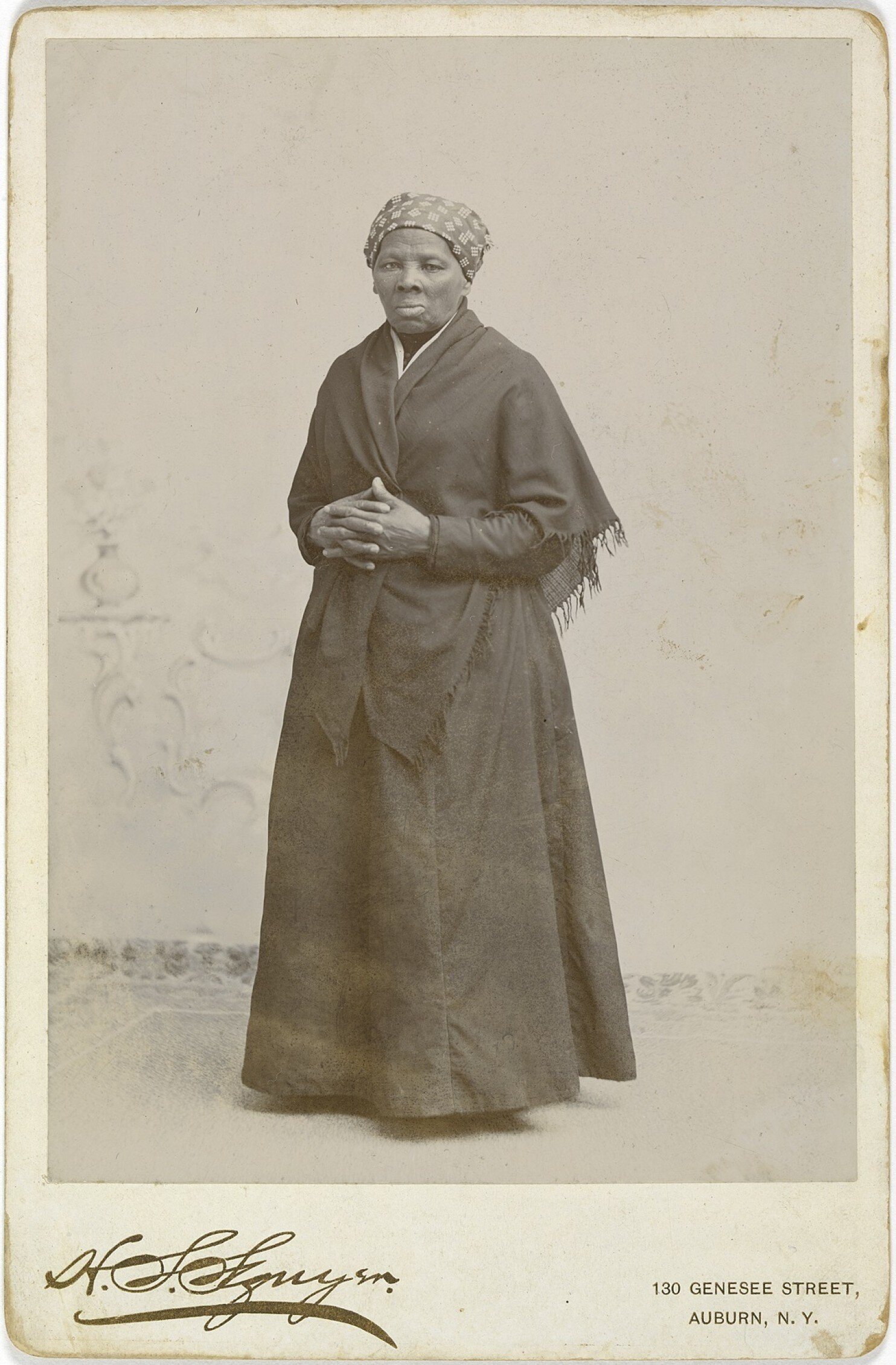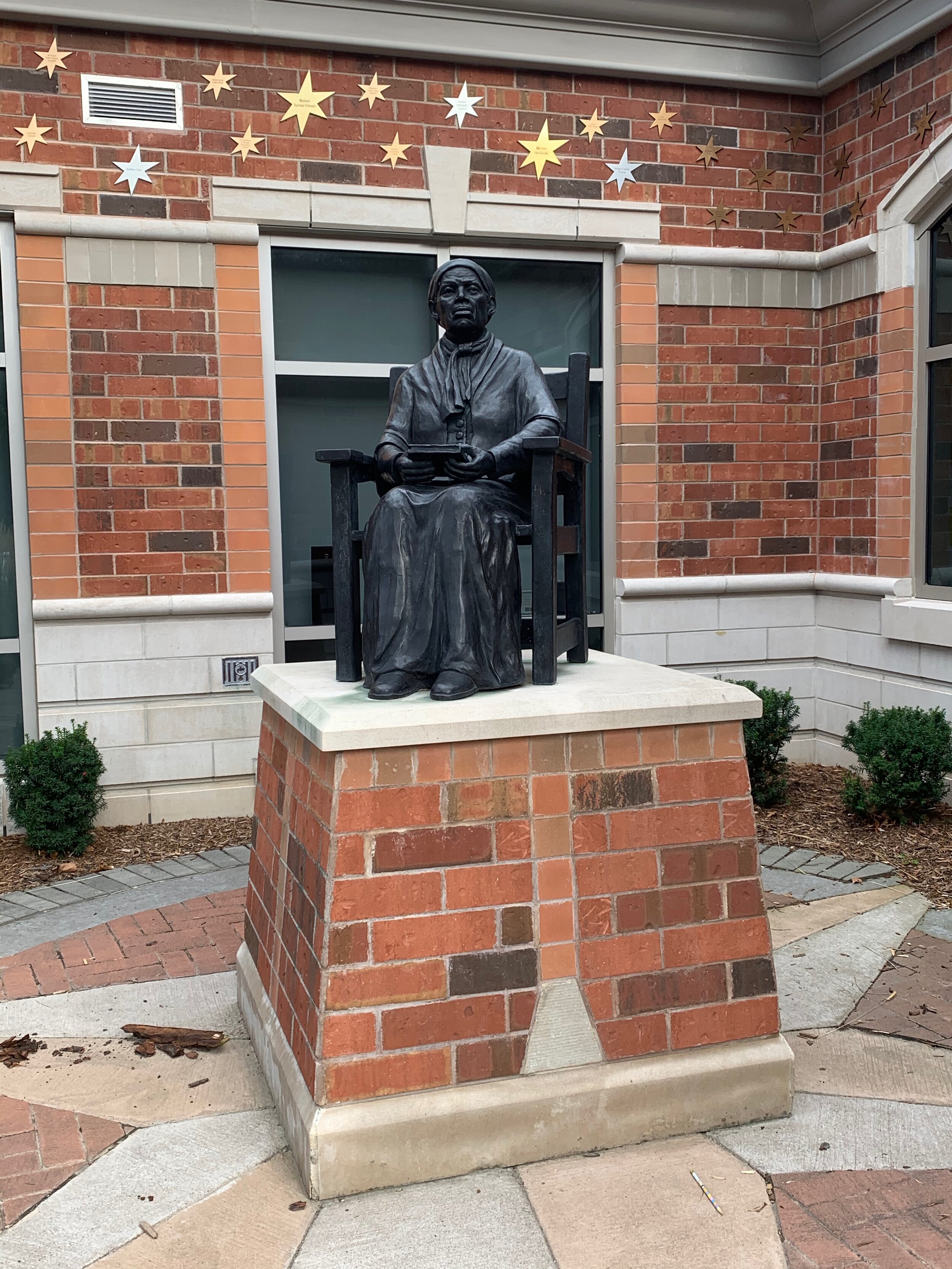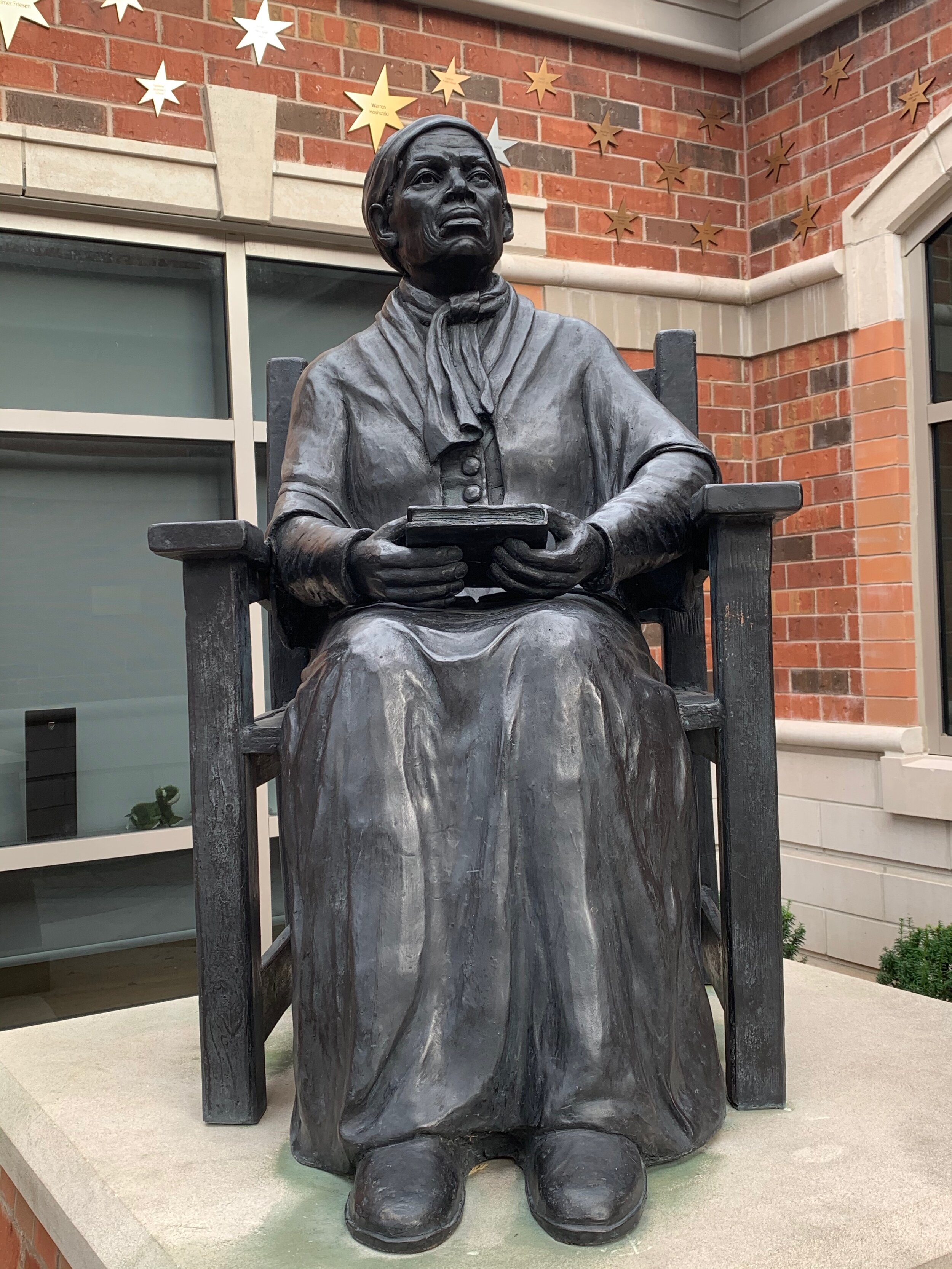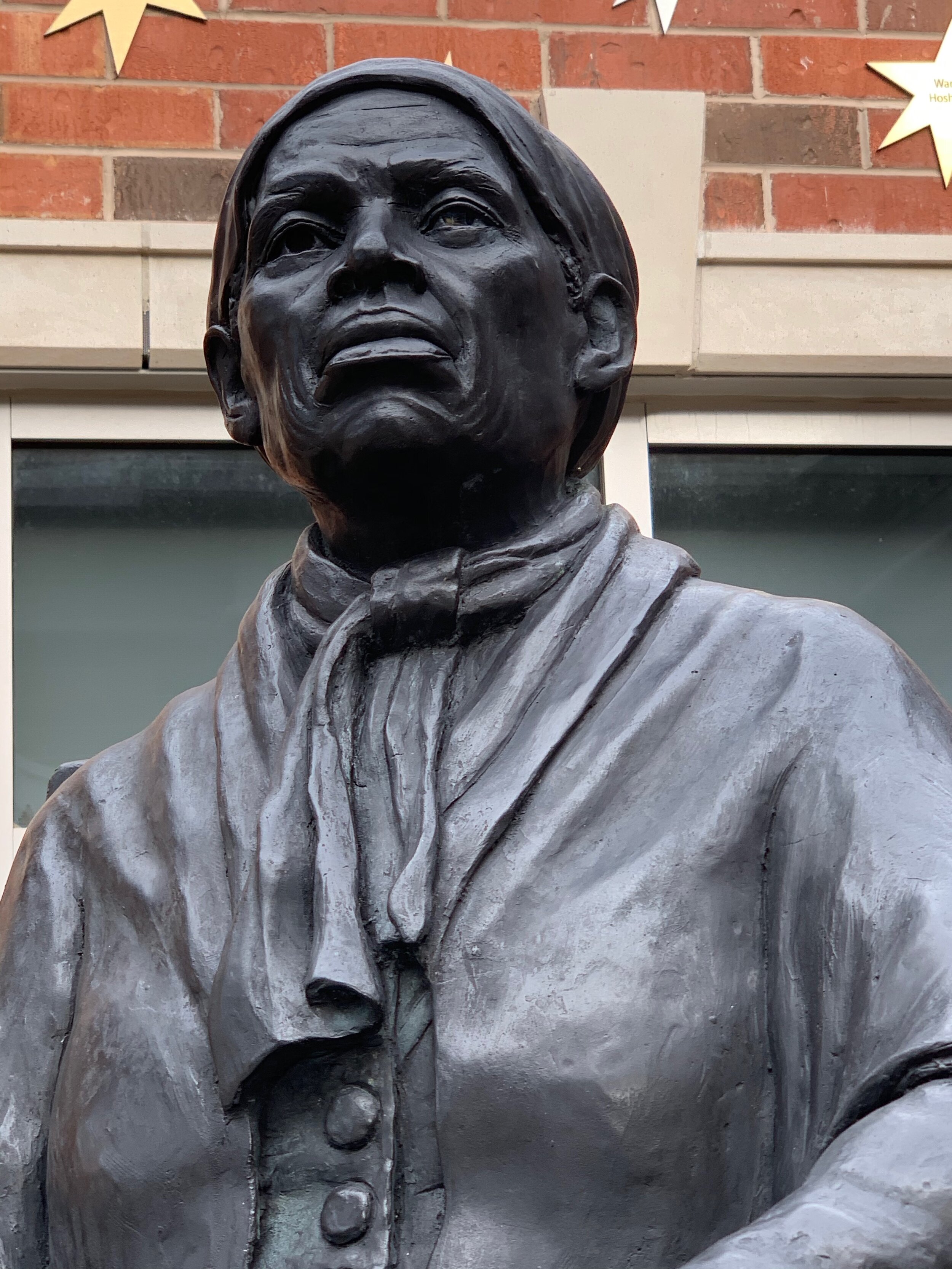Click on the image below to activate the slide show.
After leaving Schenectady, I traveled to Kingston, Ontario, for the weekend. On Sunday, I drove around Lake Ontario to St. Catharines. From 1851 to 1858, Harriet Tubman lived in St. Catharines and attended the Salem Chapel, British Methodist Episcopal Church (founded in 1855). The Salem Chapel was the first all-black church in the town. The City of St. Catharines now has two monuments to Tubman: one in the garden of the Salem Chapel; the other in the courtyard of the Harriet Tubman Public School. Canadian artist Frank Rekrut created both monuments: the portrait bust for Salem Chapel in 2010, the figure of a seated Tubman for the school in 2016.
Rekrut sourced his depiction from nineteenth-century photographs of Tubman. For the portrait bust, he turned to a well-known image of Tubman at mid-age by H. Seymour Squyer (National Portrait Gallery). Photographed against a light wall with pattern, Tubman looks directly into the camera. Her gaze is direct and strong. Wearing a checkered head wrap, a black dress, and black woven shawl, Tubman stands with her hands resting on her stomach. Squyer portrays a woman of strength and character.
Set in a meditation garden with white hydrangeas, the portrait bust at Salem Chapel sits atop a black granite plinth. Rekrut captures the same seriousness that we see in Squyer’s carte-de-visite. Etched in the granite are the following words: “Harriet Tubman. After the passing of the USA 1850 Fugitive Slave Law, she said ‘I wouldn’t trust Uncle Sam with my people no longer. I brought them all clear off to Canada.’” I appreciated the location of the memorial. A contemplative space with benches, visitors are encouraged to pause, to sit down, to view the memorial and garden, and to think about Tubman’s legacy. Despite the church’s location on a busy street, the garden was a quiet space for reflection.
For the statue at Harriet Tubman Public School, Rekrut favored an image of Tubman by W. H. Ernsberger from around 1900 (Schomburg Center for Research in Black Culture.) Aged 78 in the photo, Tubman is shown in three-quarters, turned at a slight angle to the picture plan. Staring directly at the camera, she sits in a wood armchair with her elbows resting on the arms and her hands crossed in her lap. Tubman wears a head wrap tucked behind her ears, a white linen scarf tied at the neck, a woven shawl, and a long, dark skirt.
Rekrut modeled a close likeness to Ernsberger’s photograph in a black bronze. Despite her own illiteracy, Tubman holds a book in both hands, a reminder to teachers and children of the importance of reading and learning. The sculpture is placed on a six-pointed star, and gold and silver stars with donor names decorate the string course that surrounds the statue.
Click on the image below to activate the slide show.
Watch the video below to learn about Frank Rekrut’s working method and a description of the casting process.
